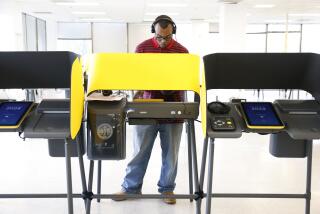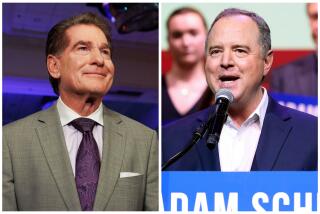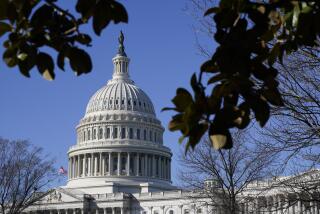Brown, Newsom, Harris prevail in California primary

Gov. Jerry Brown finished first Tuesday in the California Primary, easily advancing to the general election while Republicans Neel Kashkari and Tim Donnelly battled for the second spot on the November ballot.
Lt. Gov. Gavin Newsom and state Atty. Gen. Kamala Harris, both Democrats, also advanced to November. Insurance Commissioner Dave Jones, another Democrat, also was all but guaranteed to move to the general election.
The election was the first full-scale test of a new primary system aimed at curbing entrenched partisanship in state politics. In contests for statewide office, Congress and the Legislature, candidates who finish first and second — regardless of party — will compete in a November runoff.
The “top-two” system was approved by voters four years ago. Exasperated by chronic gridlock in Sacramento and Washington, voters ignored pleas of the two major parties to keep California’s partisan primaries intact.
But many of Tuesday’s most contentious races were local. In Los Angeles, the exit of political fixtures Henry Waxman and Zev Yaroslavsky sparked fierce contests to succeed them in the U.S. House of Representatives and on the county Board of Supervisors, respectively.
And corruption scandals have enlivened crowded races for L.A. County sheriff and assessor.
Corruption has also been a major theme in legislative campaigns, with candidates jostling to be seen as outsiders in a year when three state senators have been fighting criminal charges.
For Democrats, a top election goal in November is to regain the two-thirds supermajority they lost in the Senate when the three lawmakers were suspended, and to preserve the one they maintain in the Assembly.
Republicans’ No. 1 objective is to keep Democrats from achieving, once again, the full-blown lockout from policymaking that a legislative supermajority can bring. Republicans also want to keep Democrats from maintaining their hold on every statewide elective office.
In the governor’s race, Brown’s popularity ensured him a spot on the November ballot as he seeks a historic fourth term — four decades after he won his first.
Battling for second place are Donnelly, a state assemblyman from the outskirts of Lake Arrowhead, and Kashkari of Laguna Beach, a former top U.S. Treasury official. It is one of many GOP primaries across the nation this season pitting tea party candidates such as Donnelly against those, such as Kashkari, backed by the party’s business establishment.
California’s strongly Democratic tilt makes reelection a small challenge for many of the party’s incumbents, including Newsom, Harris and Jones. State Controller John Chiang has drawn minimal opposition in his bid to switch to the state treasurer’s job.
But the race to succeed Secretary of State Debra Bowen, who is barred by term limits from seeking reelection, is a free for all, with eight candidates in the primary. Among them is state Sen. Leland Yee of San Francisco, who stopped campaigning after his indictment in a lurid arms trafficking and bribery case.
In the controller’s race, a north-south battle among Democrats erupted, with Assembly Speaker John A. Pérez of Los Angeles facing Betty Yee, a Bay Area member of the state Board of Equalization, among other candidates. Also in the running was Fresno Mayor Ashley Swearengin, a Republican touted by GOP leaders as one of the party’s best prospects for recapturing statewide office.
All signs pointed to low turnout. Election analysts expected about 7 in 10 of the state’s nearly 18 million voters to skip the primary.
Adding to the somnolence was the lack of any high-profile ballot measure fights. Under a 2011 law, only measures placed on the ballot by the Legislature can be put to a statewide vote in primaries; citizen initiatives are now relegated to November general elections.
Lawmakers put two measures on Tuesday’s ballot. Proposition 41 is a bond measure for veterans housing. Proposition 42 would require local governments to bear the cost of complying with the state’s public records law.
In congressional and legislative races, the top-two system took effect two years ago. Its effect on governing is not yet clear. But it already has scrambled primary politics, forcing candidates to try to appeal to a wide range of voters. Independent and minor-party voters were in play on Tuesday.
And in some cases, candidates from the same party — or from no party at all — could make it to the general election.
“It’s just a kind of a crazy Wild West situation going on in some of these districts,” said Paul Mitchell, vice president of Political Data, a nonpartisan firm that tracks voting patterns.
A prime example was the brawl over the Westside congressional seat that Waxman has occupied for nearly 40 years. The primary ballot offered voters a choice of 18 would-be successors — 10 Democrats, three Republicans and five others.
More to Read
Start your day right
Sign up for Essential California for news, features and recommendations from the L.A. Times and beyond in your inbox six days a week.
You may occasionally receive promotional content from the Los Angeles Times.







